#spanish colonial
Text
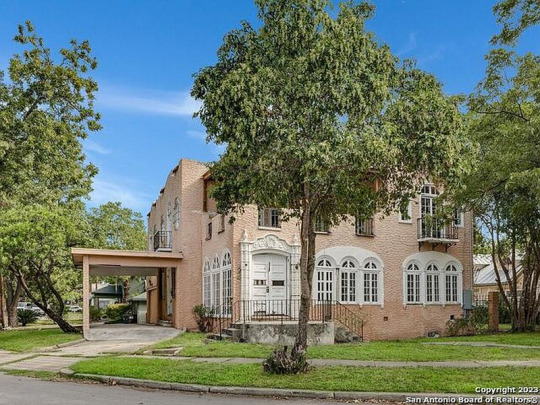
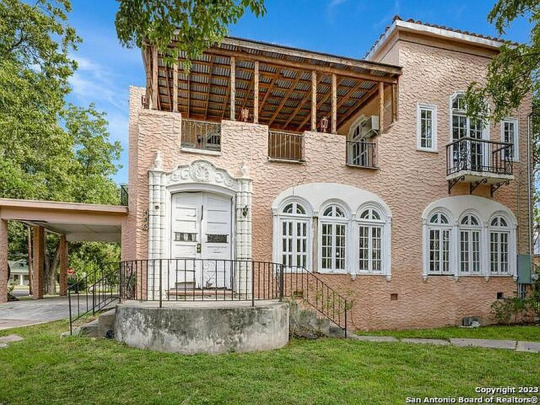
The real estate ad says this gorgeous 1927 Spanish Colonial in San Antonio, Texas is a great opportunity to restore an historic home. But, I hope it doesn't mean that someone will come along to gut and modernize this nearly 100% original home. I would rather just repair and paint the amazing 4bd, 2ba, 3.5ba building and leave the architecture as it is. Let's go thru it.

Isn't this entrance hall fabulous? Original double doors that need refinishing, floral tile floors and wrought iron inserts on the windows, plus wrought iron gates. Also an original light fixture and door chime.


The dramatic, huge iron gates open to the great room.
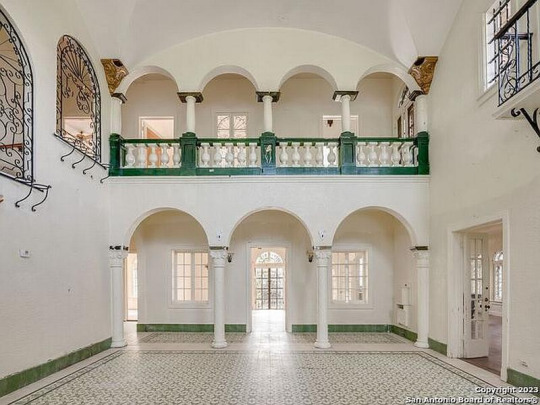
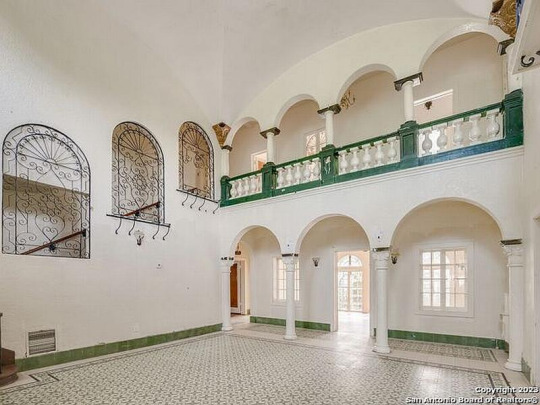
Behold the great room. Original tile floors, columns, arches, a balcony, and a mezzanine. The wrought iron on the left show the stairs. And, the gold corbels in the corners are so beautiful.


These 2 photos show the umbrella shape of the incredible ceiling with corbels in each corner. I can picture someone taking all the iron down and lowering the ceiling, making it flat.

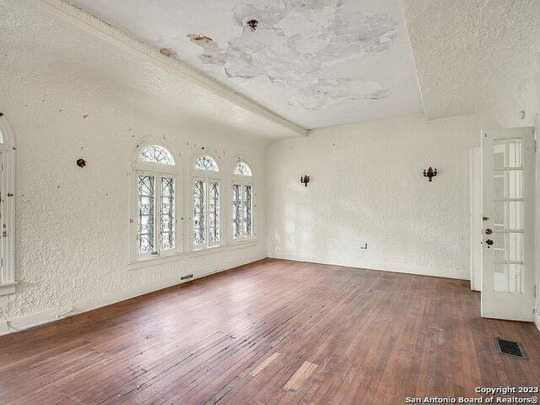
Off the great room, they must've had a game room and it looks like they left a vintage pool table. The ceiling needs repair, the walls need touch up and paint. The floor could use a sanding and refinish.
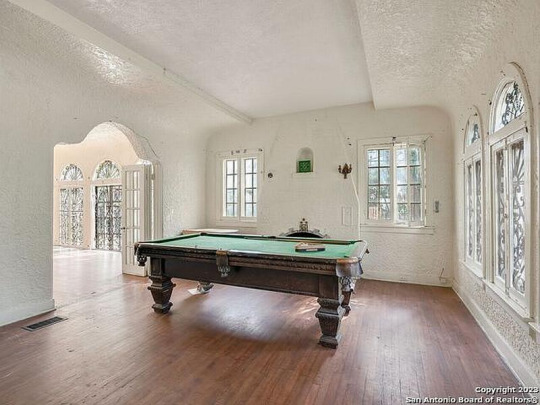
The wonderful chunky old pool table is hiding the fireplace, and there's a fabulous one behind it. Love the curve and shape of the ceiling.
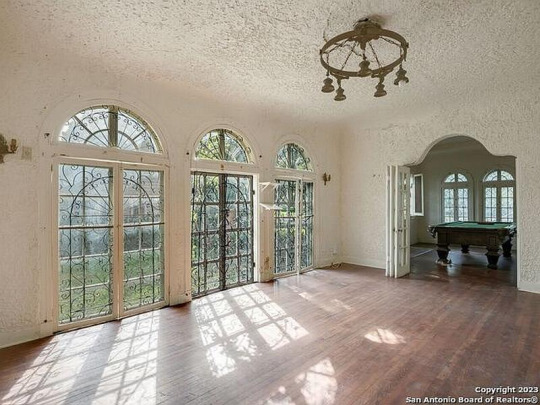
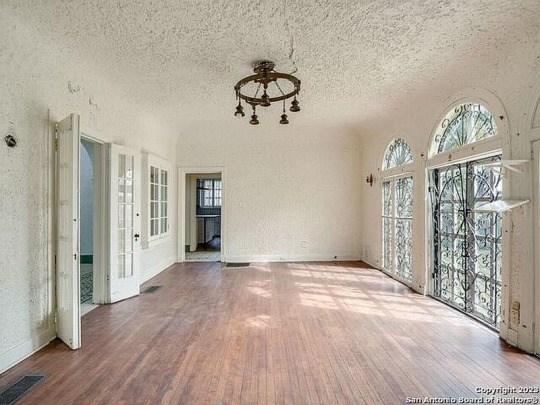
Off the game room is a dining room. Again, it will need a few tweaks. But, the doors, wrought iron, etc., are in good shape. The brass fixture is original but may have to be rewired and polished.
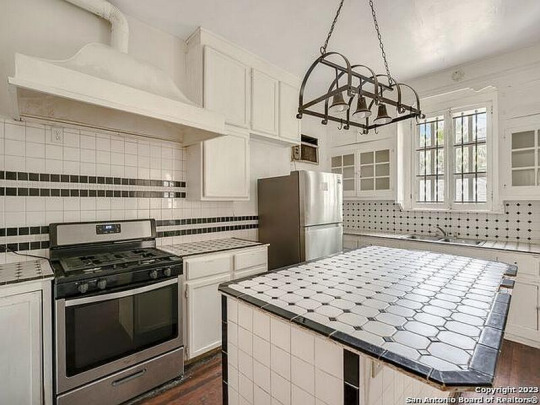
The owners put in new appliances but I would sell them, then buy the retro look ones.
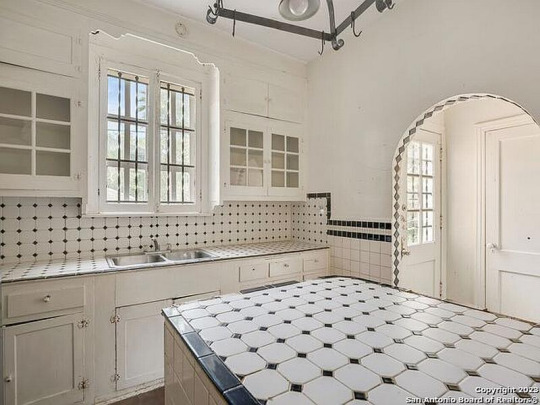
I love the kitchen. It needs some tile repair and stuff, but it's mostly original, especially the cabinets and the range hood. You know someone's gonna gut this and completely modernize it.
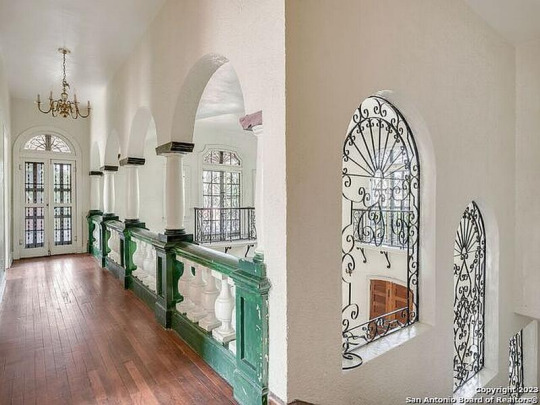
Oh, damn, looks like that one iron inset is broken. Up here on the mezzanine the beautiful railing has to be repainted or stripped.

It's so nice up here.

Looking down at the great room. Love this house so much.
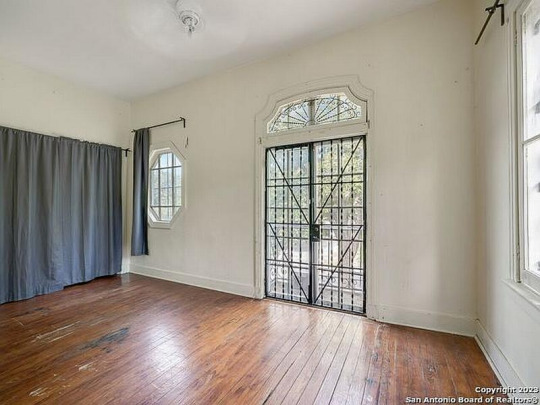
This must be a bedroom and that's probably the "closet" behind the drapes. Look like there's a balcony, too.

Cute smaller room.
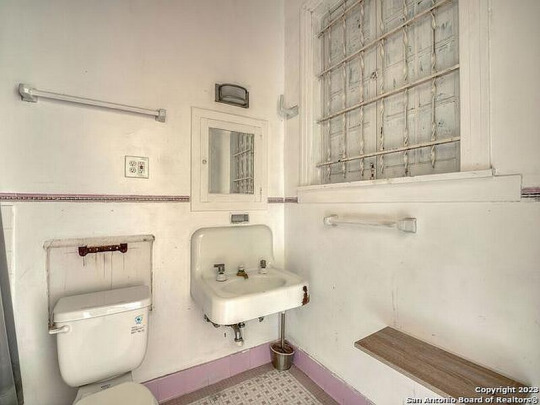
Look at this wonderful vintage bath. Toilet's new, but you can see the outline of the old one. There's an original sink and medicine chest.

And, this would be the 3rd bd.

Oh, look at this- original tub. The pedestal sink looks like a good repro and at least some of the tile is original. There's also a shower on the right.

I would say that this large room with the fireplace is the primary bedroom. Beautiful.


What a great big outdoor space to entertain. It's covered and on each wall is a lantern light- can you imagine how pretty they would look at night?
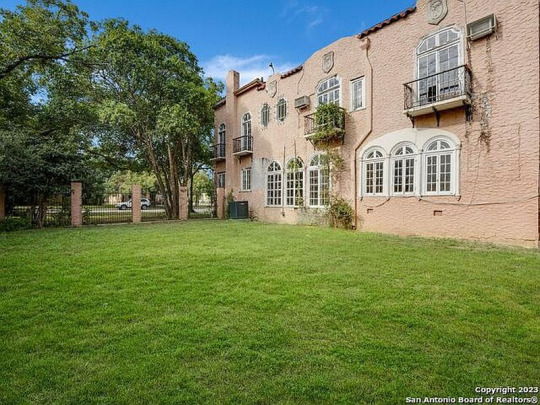
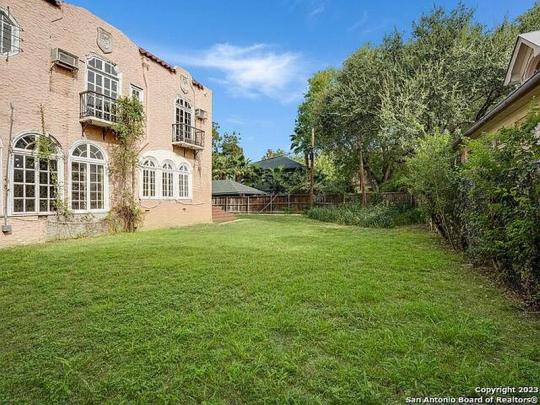
Lovely fenced yard. You can see the bedroom balconies, too. Could probably fit a pool back here. The lot is 9,060 sq. ft.

From here you can see that it has a port cochere and a garage. Also, above is that wonderful covered deck.
138 notes
·
View notes
Text

Puerta, Álamos, Sonora, 1996.
38 notes
·
View notes
Text


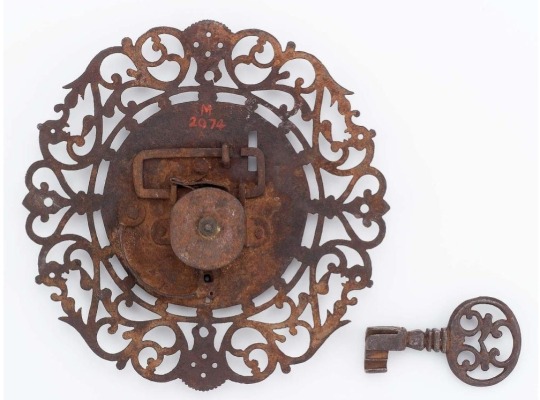
▪︎ Lock and key.
Culture: Spanish Colonial
Date: 1750–1800
Place of origin: Mexico
Medium: Wrought iron
#18th century#19th century#mexico#mexican#spanish colonial#colonialism#lock and key#lock#key#wrought iron#1750#1800
530 notes
·
View notes
Text


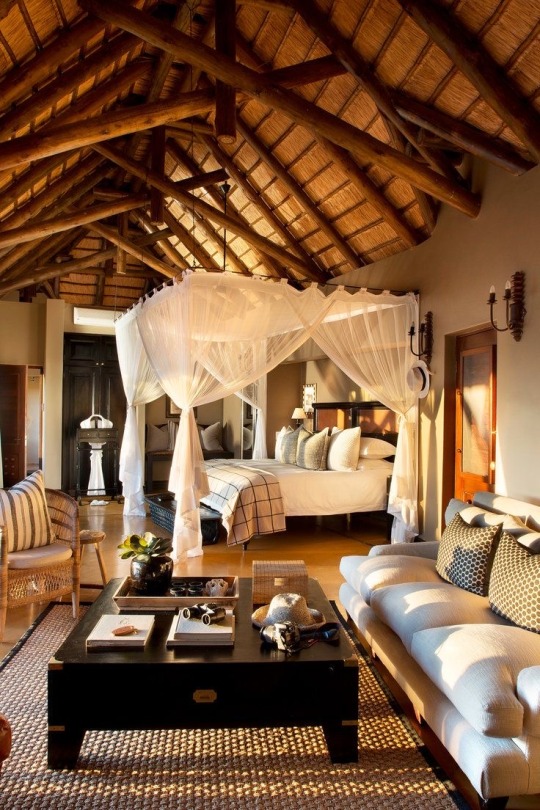

Dream Home
382 notes
·
View notes
Text
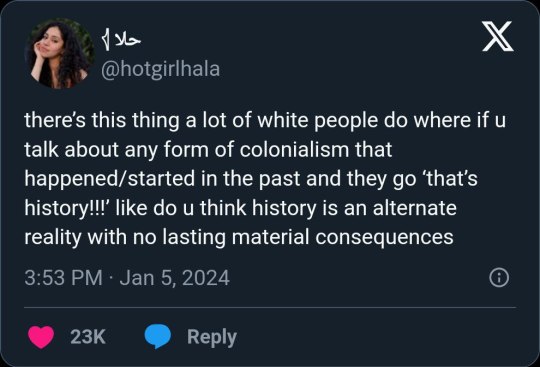
#white people twitter#white people shit#white people are still 36% more likely to be rented a room than black people#white people problems#white people be like#history#colonialism#colonization#colonial violence#colonial america#colonial history#colonizers#spanish colonial#ausgov#politas#auspol#tasgov#taspol#australia#fuck neoliberals#neoliberal capitalism#anthony albanese#albanese government#class war#anti colonialism#anti colonization#eat the rich#eat the fucking rich#antiauthoritarian#antifascist
21 notes
·
View notes
Text
Notes on Anitismo - The Ancient Religion of the Philippines by Isabelo de los Reyes.

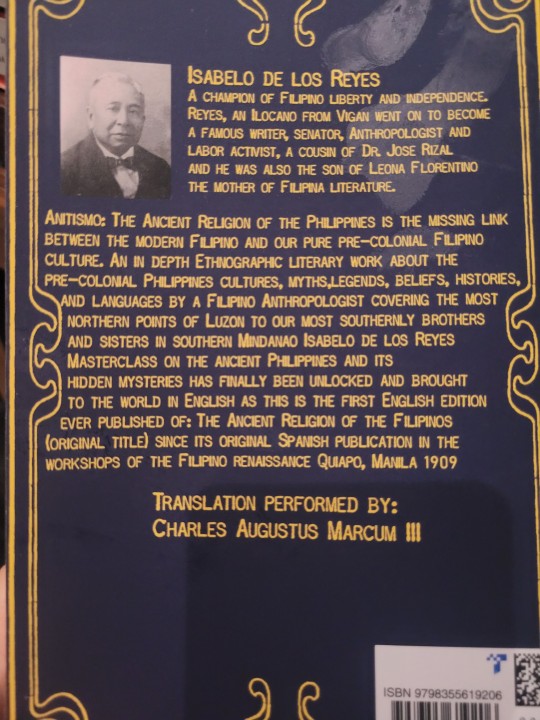
Keep in mind - this was written a while back.
Ancient Chronicles written by the Jesuit hispanic Friars state that at the that the first spaniards set foot in the Philippines from the coast of visayas to Manila there was a considerable population of Muslim converts
This was especially true for Mindanao due to conversion by Islamic teachers from Borneo
De los Reyes argues that because of this, to find native Filipino religion at its purest, we must look to the North
Distinguishing native religion without outside influence such as from Islam, Hinduism, Christianity etc can be tricky
However he argues that the traces of Native Filipino religion can be found in the stories superstitions and advice that belong to various Filipino ethnic groups (Tagalogs, Bicolanos, Zambalenos etc)
From the South of the country in Mindanao to the extreme North like Luzon, De los Reyes argues then native Filipino religion was consistent
This religion was Anitism or the Cult of Anito, meaning souls of the ancestors.
Anitism is not a monolithic religion and hosts a broad pantheon ranging from Gods to animals, nature, elements and space.
The Philippines had its own modern spiritism and De los Reyes argues this may have been the origins of the cults of "Romanist Saints" (Catholic saints) in the Philippines. By this I think he means that Filipino spirituality influenced how Filipinos proceeded with Catholic worship.
The oldest chronicles about the Philippines can be found in various museums and libraries (such as the National Library of Madrid, Covenant of St Augustine in Manila)
We can follow these chronicles, from when the Jesuit Pedro Quirino provided news of religion in the Philippines in 1604, followed by reproductions by others like the Jesuit Colin in 1663 and others such as Fr. Morga, Gonzalez de Mendoza, Aduarte etc.
Fr Morga said that Filipinos practised Anitism in certain regions like Camarines and Cagayan.
Some traditions would say that Manila and its regions were not originally native to the island - they were from Malayan islands and other remote areas.
Before the Spaniards arrived, Islamic teachers from Borneo came to preach and interacted with the locals
Their teachings and beliefs spread quickly throughout the Philippines
Fr. Grijalva writes that they (Filipinos) started adopting their traditions and took on their names.
De Los Reyes argues that Spanish conquistadors' arrival/conquest was delayed because Filipinos were already familiar with various religions and beliefs and also because of the hands of Datu Lapu Lapu. What I believe he is arguing is that Datu Lapu Lapu and the previous exposure Filipinos had to different religions at first delayed Spanish influence from spreading so quickly.
Other islanders who weren't under the control of the government in the Philippines has their beliefs influenced by religious preachers who travelled to them from the Straits of Malacca and the Red Sea.
An account, dated April 20th 1572 (preserved in the archives of India) which is from the conquest of Luzon details "In these towns, closest to the sea, they do not eat any pork, which the moors taught them. But if you ask them, they say they do not know Muhammed or his law." This account was reproduced by Wenceslao Retana.
In actuality, very few Filipinos could understand/read the teachings of the Koran despite the Islamic influence.
In Filipino traditions, reverence and worship was given to nature and the elements, and this was usually consistent throughout the islands.
Native Filipino religion beliefs include elements, animals, stars and ancestors.
Filipino religion in Manila and nearby areas was a mixture or Anitism, Buddhism, Hinduism and Islam brought by the Malays of Borneo.
Vocabulary included Sanskrit and Malay terms such as Bathala, meaning Lord.
However these terms are not used in Northern provinces.
De Los Reyes argues that Itnegs and other mountain tribes conserved and maintained the purest form of Filipino religion
In the Ilocos, Cagayan, Isabela and other provinces of Northern Luzon, native Filipino religion was more prevalent
Hindus and Buddhists converted many in Java and Malaysia.
However Muslim influence became dominant in 1478 - 60 years before the Dutch invasion.
According to Javanese legends, Hindus arrives in Java 78 years before Christ.
The first Malays came from the Minangkabau river region to establish cities in Malacca , Ojohor and Singapore in the 12th century, as per Malacca records.
In the 13th, 14th and 15th centuries, there were various Malaysian emigrations reaching the Philippines
De Los Reyes argues that Filipinos may have also populated the islands of Malaysia, and emigrations could have originated from strong winds coming down from the North.
The first Spaniards found the son of Lakandula, King of Manila, when they went to Borneo.
The emperor's master of ceremonies from Japan (Mr Fujita) argued that emigration likely came from the north and that Filipinos may have some relations to the Japanese.
According to Geographers and Historians of the Mariana Islands, what De Los Reyes calls the "know it all Spanish" - had no idea about interesting ruins found in Oceania, one of which was a prehistoric statue that was being held in the British museum.
He argues there may be hidden megaliths, artefacts, and remnants of lost civilisation in the Philippines, as seen in various locations such as : Butacan caves, Pangibalon Hill, Madias de Iloilo and Nasso.
#Philippines#pre colonial philippines#Filipino#Filipino history#Anitism#Filipino religion#Pinoy#Isabelo de los Reyes#History#Asia#Asian history#South east Asian history#Religion#ancient religion#South east asia#Colonialism#spanish colonial#Spanish colonialism#Philippines history#Philippine history#Anitismo#Keep in mind this was written a while ago so some terms may be outdated#I've tried to interpret some tricky parts the best I could#My ass who is from the Northern Philippines 🗿
51 notes
·
View notes
Text
Rio Verde Retirement Home

LOT: Rio Verde (40x30), Skyward Palms, Oasis Springs
LOT TYPE: Residential
COST: § 360,456
KEY FEATURES: 4 bedrooms for residents | Caretaker suite | Music corner | Art studio | Library | Game area | Gym | Home theatre/cinema | Garden | Outdoor pool
NOTES:
My entry for the Reddit Bi-Weekly Build Challenge, Week 144: Activity-Orientated Retirement Homes.
Built as an upscale sort of senior living facility that has all sorts of dedicated spaces for Elder Sims to build skills, have fun and just hang out together.
DOWNLOAD HERE.

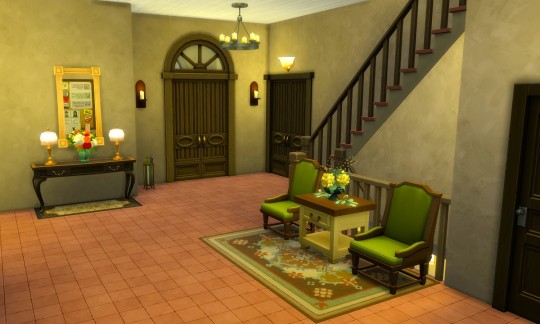
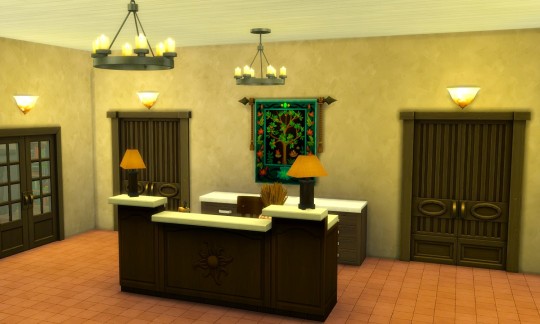







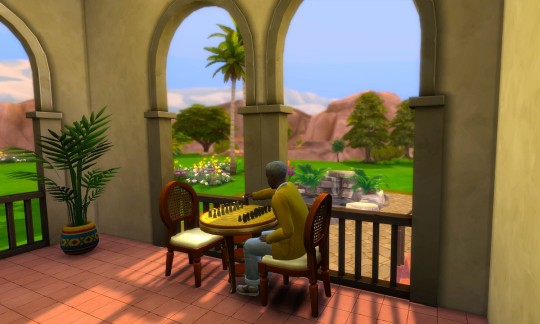

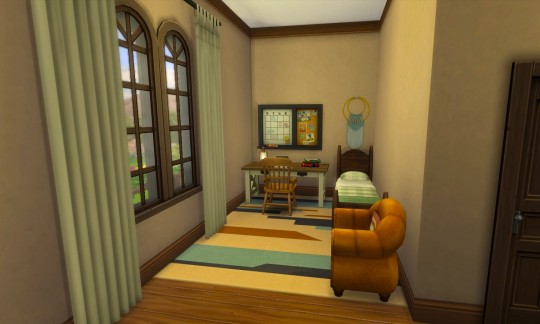




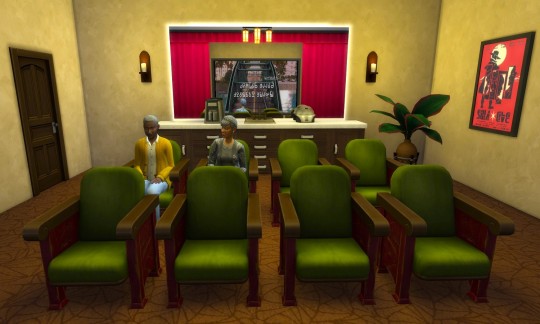
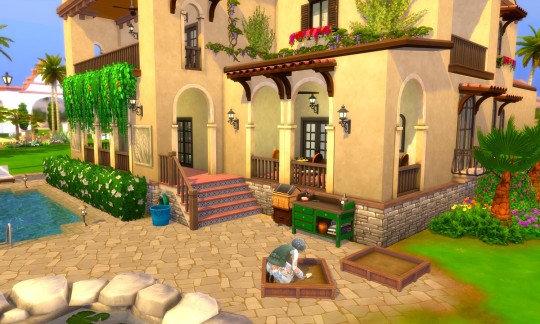

#RedditBuildChallenge#Rio Verde#Skyward Palms#Oasis Springs#residential#senior living#lot#tatselk builds#moo#nocc#cc free#sims 4#the sims 4#the sims 4 build#ts4#ts4 builds#spanish colonial#mission#mission revival#retirement
27 notes
·
View notes
Text

REPOST CAUSE I DIDNT DRAW RIZALS TIE CORRECTLY 😭
anyways i think their executions were kind similar tbh.....
#art#fanart#my art#history fanart#history fandom#history#michel ney#marshal ney#jose rizal#josé rizal#french empire#french revolution#napoleonic era#napoleonic wars#napoleonic#filipino#philippines#spanish colonial#spanish colonial period#kkk philippines#katipunan#kataastaasan kagalang-galang na katipunan ng mga anak ng bayan
18 notes
·
View notes
Text
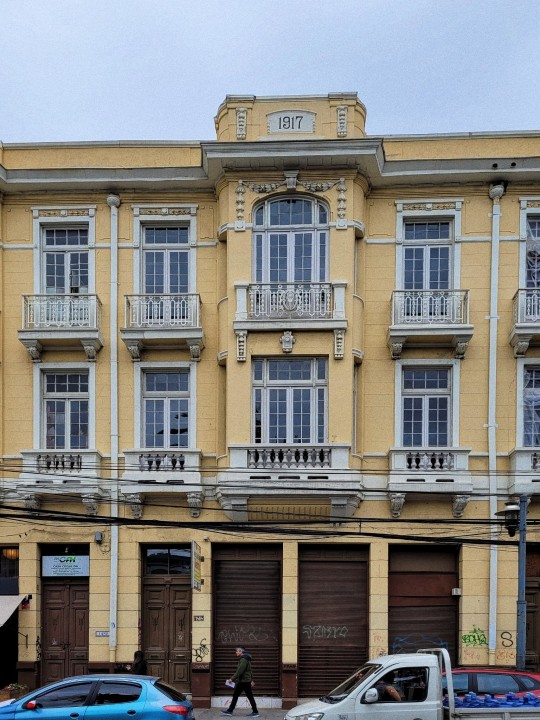
Valparaíso, Chile.
#valparaiso#photography#travel#autumn#tumblr chilenito#colonialism#spanish colonial#amarillo#yellow aesthetic#architecture#arquitectura#1917
37 notes
·
View notes
Text
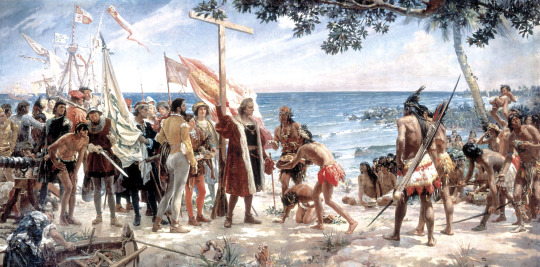
José Garnelo y Alda (Spanish, 1866-1944)
The first tribute to Columbus (October, 12, 1492), 1892
Museo Naval, Madrid
The work depicts Columbus landing in the New World on the island of Guanahani (in today's Bahama Archipelago), and the new lands being taken over in the name of the Spanish monarchs on October 12, 1492. The artist was inspired by descriptions found in Columbus's renowned journal, but modified certain aspects, including dressing the native people (whereas the journal states that they went about naked). The cross is a reference to Christianity and the evangelizing work carried out in the New World. The flags of Castile reinforce the idea of allegiance to the kingdom and Columbus' stature as an envoy of the monarchs.
#José Garnelo y Alda#spanish art#spanish#hispanic#latin#colonialism#colonization#spanish colonial#queen isabel i of castile#art#fine art#european art#classical art#european#europe#oil painting#fine arts#europa#mediterranean#christopher columbus#Ferdinand II of Aragon#catholic monarchs#castile#aragon#spanish monarchs
22 notes
·
View notes
Text

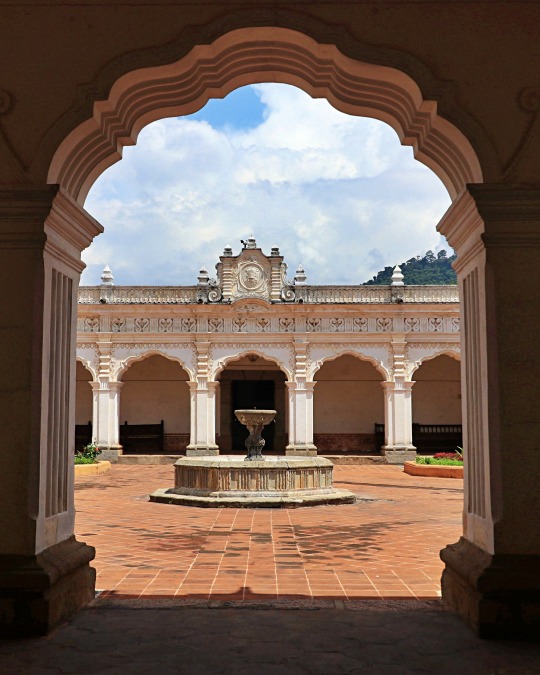
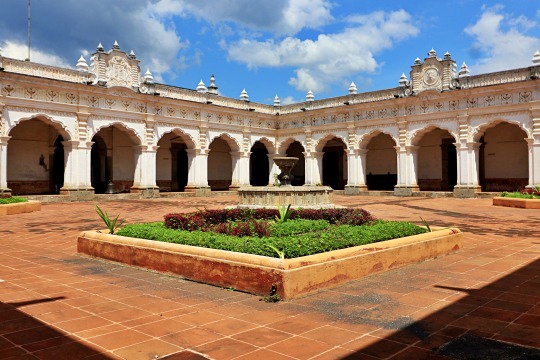


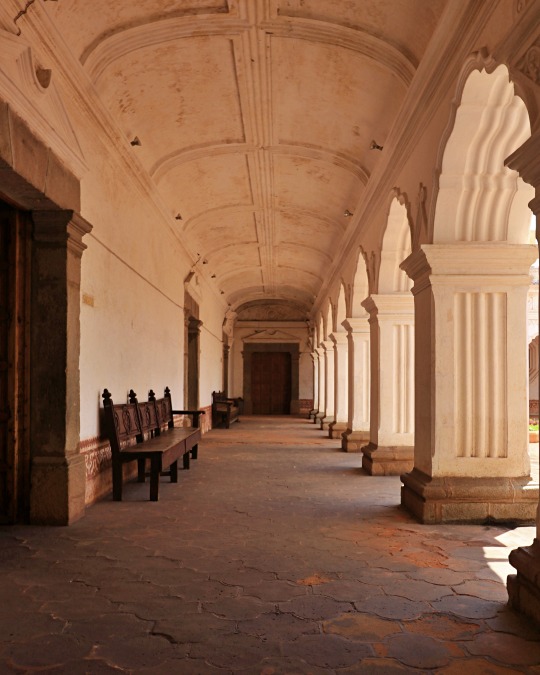
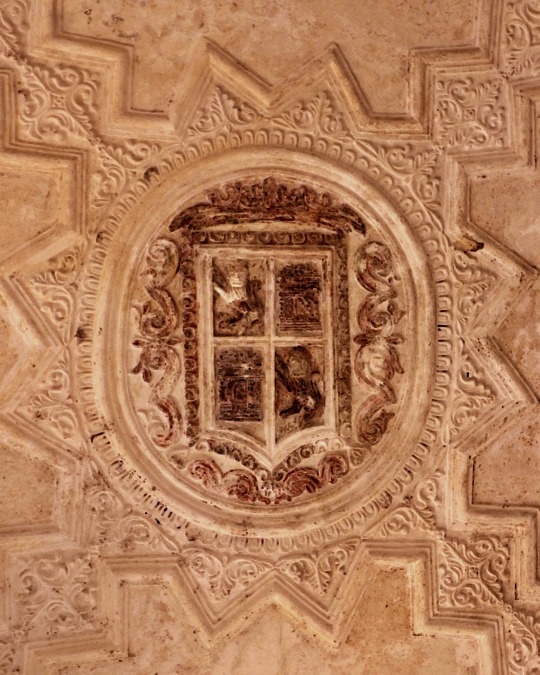
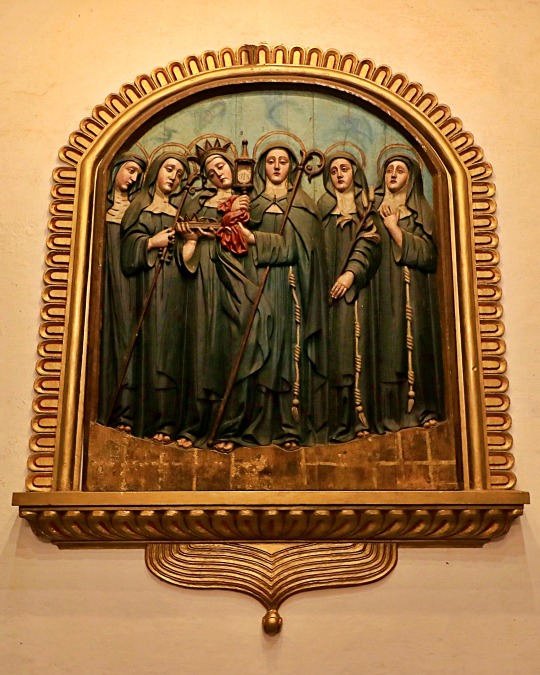
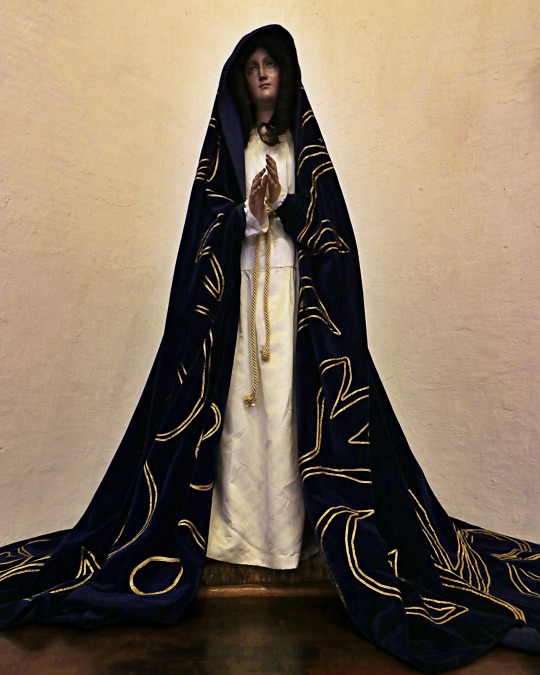

Museo de Arte Colonial ( Antigua / Guatemala )
#photooftheday#travelphotography#adventure#aroundtheworld#antigua guatemala#colonial america#colonial#travel#explore#artcolonial#national museum#spanish colonial#trip#antigua#art#artwork#history#guatemala#pickoftheday
9 notes
·
View notes
Text

Tropical Living. A home in Cartagena, Colombia.
Home of jewellery designer Chiqui de Echavarría.
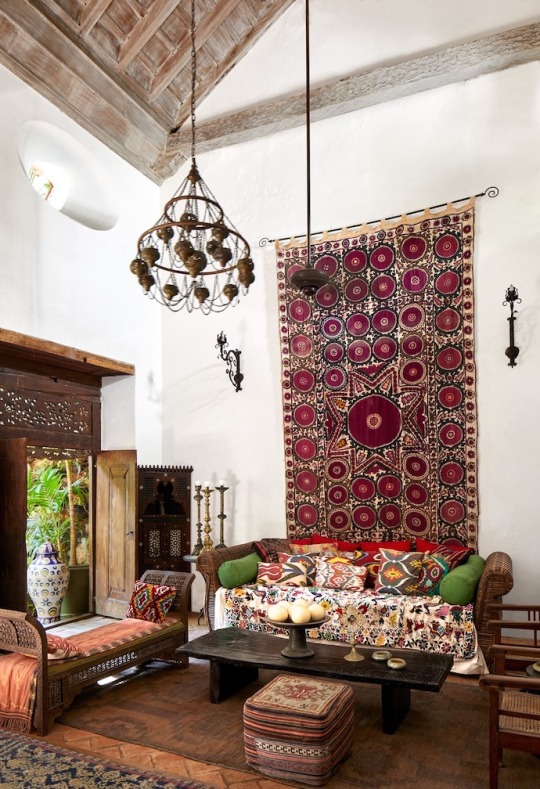
A sitting area is centered around an Indonesian rattan sofa bed, complemented by a Moroccan bench, a Turkish pouf, and sconces designed by Juan Montoya.
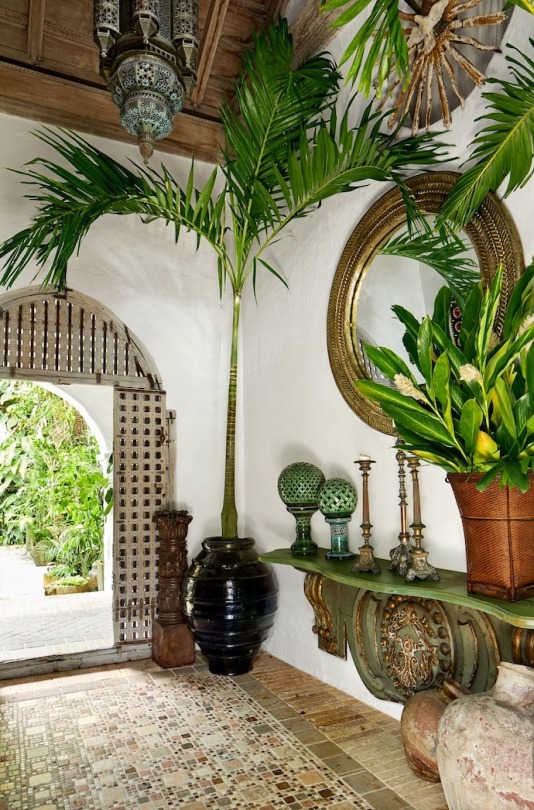
Entrance: In the entrance hall, an Italian church altar dating back to the 17th century serves as a focal point, adorned with Moroccan candlesticks and an antique vase from Indonesia. An Indian mirror, an Indonesian ceramic planter, and a Moroccan carved wooden door and pendant contribute to the eclectic atmosphere. The flooring boasts antique Colombian mosaic tiles, while a 17th-century church pedestal stands as a wooden sculpture.
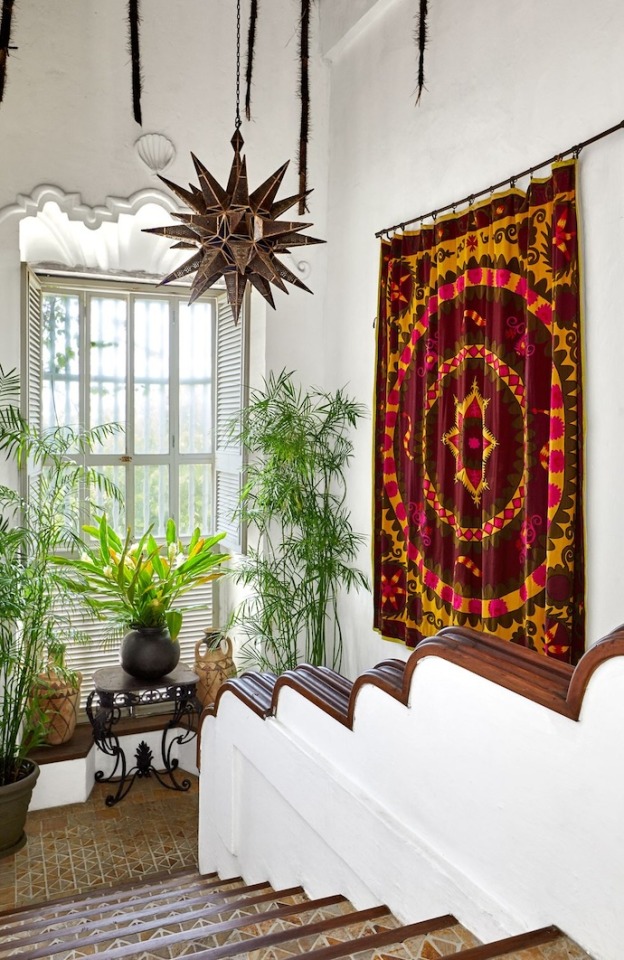
The staircase banister showcases the intricate handiwork of a local artisan, while the pendant lighting is of Moroccan origin. Adding a touch of cultural flair, the tapestry adorning the space is a suzani from Central Asia.
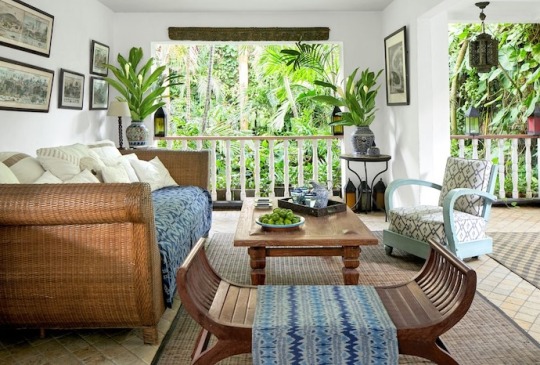
A sofa bed from Indonesia takes center stage, adorned with batik pillows and an ikat. The accompanying teak bench and cocktail table also hail from Indonesia, while an Art Deco armchair from Colombia adds a distinctive touch. Completing the ensemble, the fiber-and-leather rugs are crafted by Mamayana.
Photography by Ricardo Labougle, all photos via Elledecor.
11 notes
·
View notes
Text
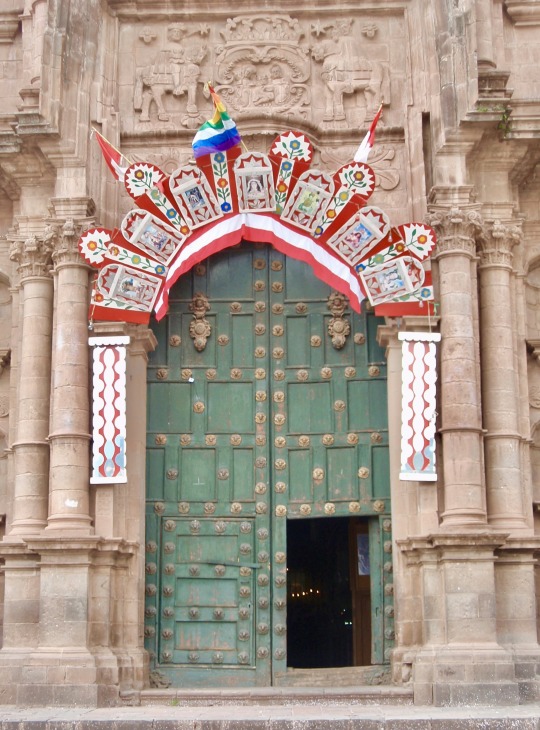
Decoraciones para celebración del día de un santo, iglesia, Cusco, 2010.
18 notes
·
View notes
Text
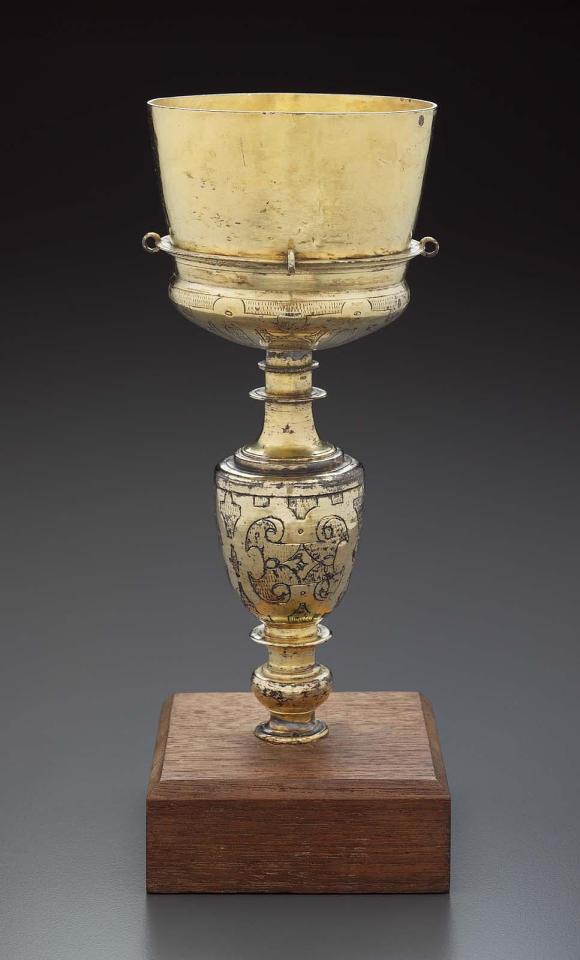
▪︎ Cáliz (Chalice).
Culture: Spanish Colonial
Date: ca. 1600
Place of origin: Mexico City, Mexico
Medium: Silver gilt
#history of art#decorative arts#history#art#17th century#cáliz#chalice#mexico#mexican#spanish#spanish colonial#mexico city#ca. 1600
65 notes
·
View notes
Text
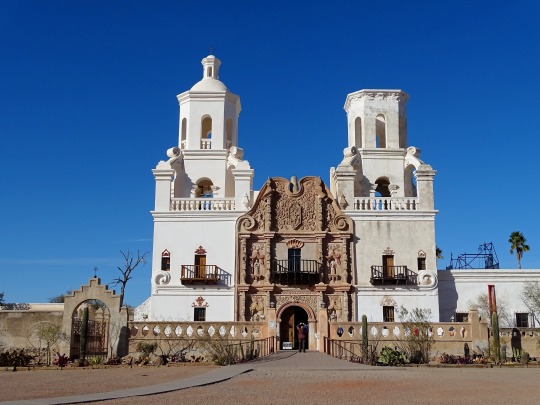
San Xavier del Bac, about 10 miles from downtown Tucson, Arizona.
Explore:
#arizona#church#church architecture#mission#history#us history#spanish baroque#baroque#american history#wandering#travel#architecture#original photography#photographers on tumblr#historical architecture#spanish colonial#colonial america#lensblr#wanderingjana
9 notes
·
View notes
Text

#imperialism#native american#america#amerikkka#amerika#united states#unitedstateofamerica#unitedsnakes#united states of america#made in usa#usa news#usa#colonization#colonialism#spanish colonial#colonial america#anti colonialism#anti colonization#class war#genocide#no pride in genocide#ausgov#politas#auspol#tasgov#taspol#australia#fuck neoliberals#neoliberal capitalism#anthony albanese
27 notes
·
View notes